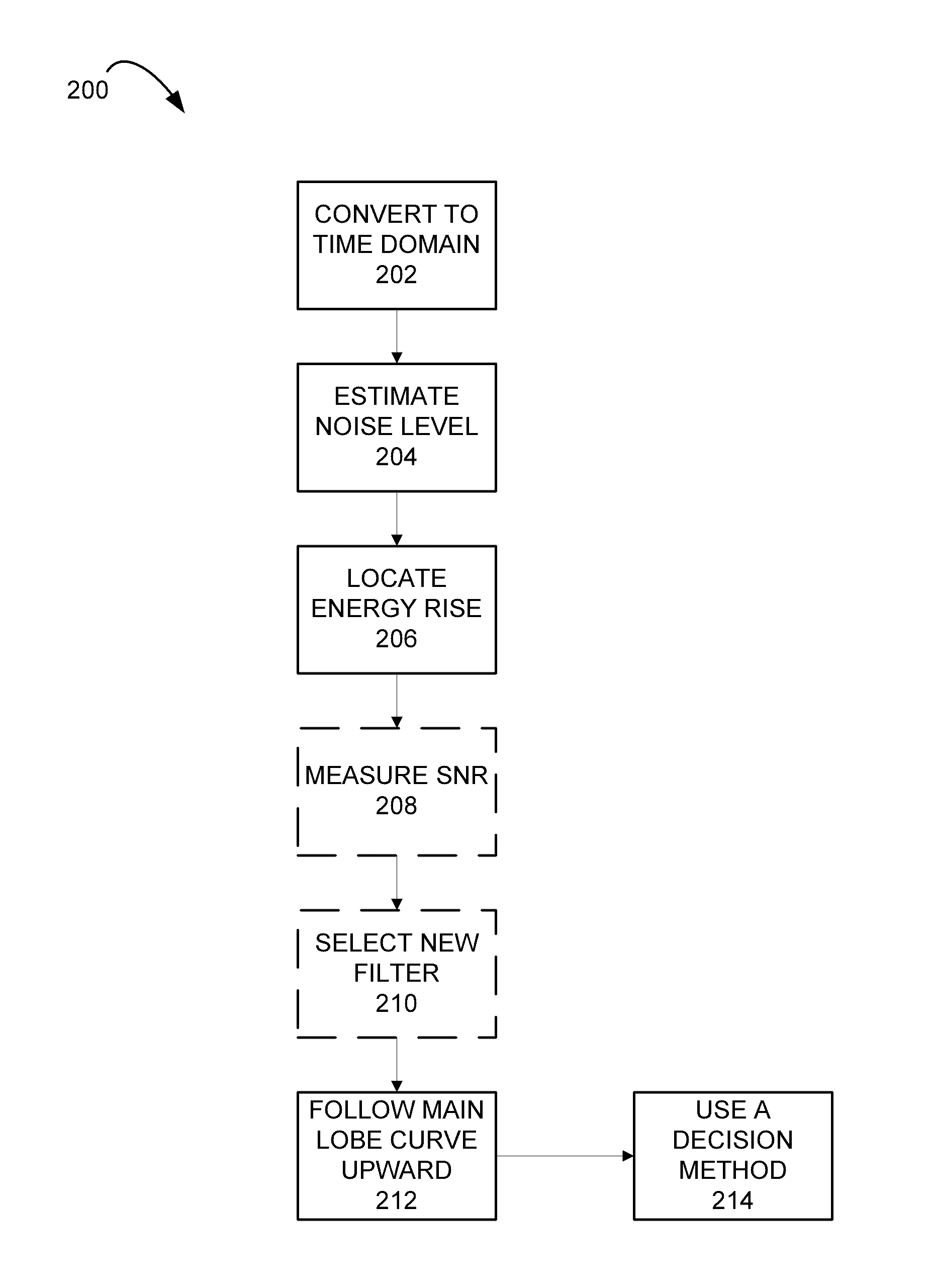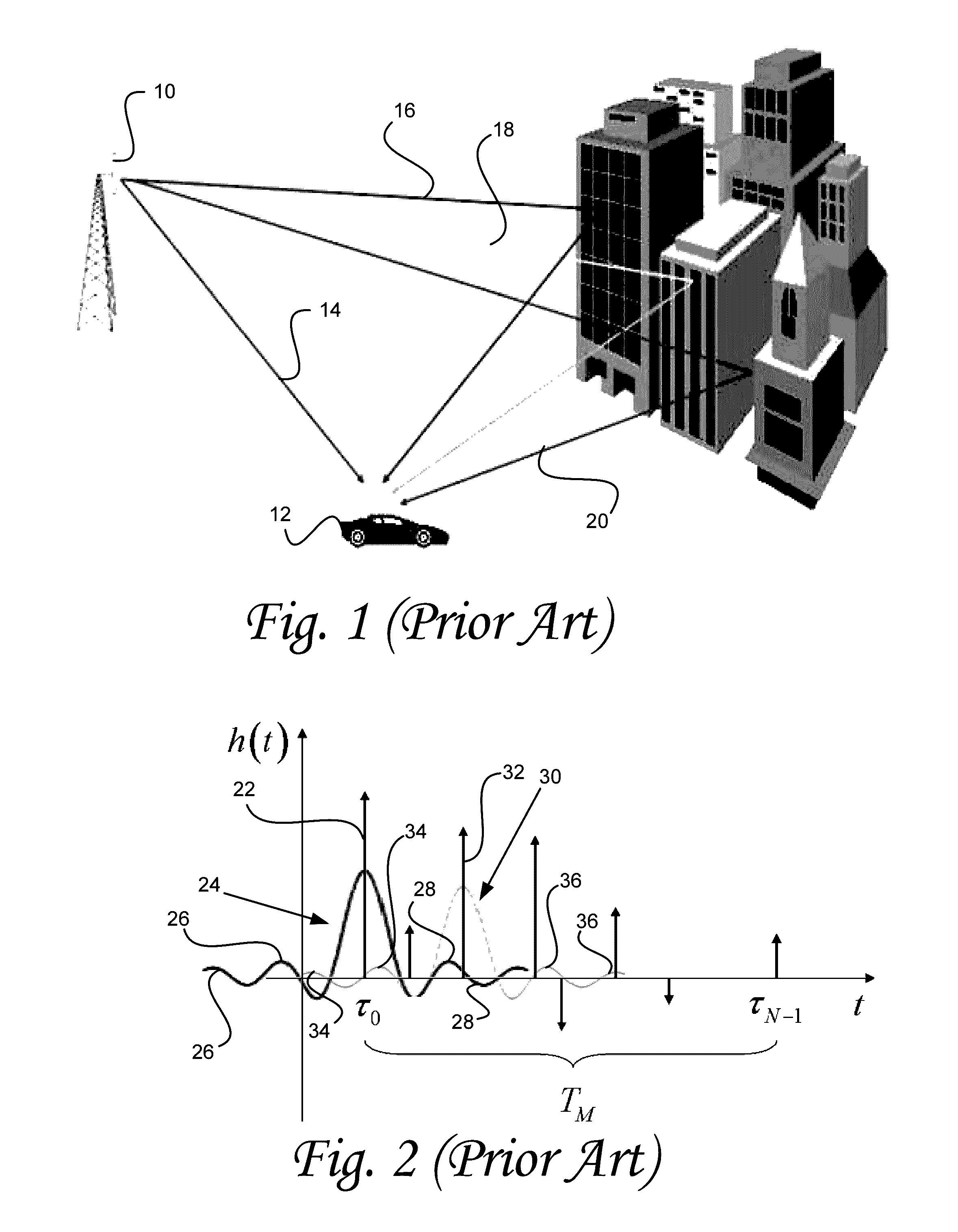System and Method for Estimating Time of Arrival (TOA)
- Summary
- Abstract
- Description
- Claims
- Application Information
AI Technical Summary
Benefits of technology
Problems solved by technology
Method used
Image
Examples
Embodiment Construction
[0008]The impulse response shape is usually a sinc, a raised cosine, or some relatively slowly decaying waveform symmetrical around the origin. The reason for the symmetry is that the frequency domain matched filter creates a zero phase signal symmetrical in time domain. The matched filter is necessary to optimize symbol detection in noisy environment (used in conjunction with an equalizer). In this problem, the information is carried by all the taps.
[0009]However, the inventor has found that for estimating the TOA where the information is carried by the first tap only, and whose phase has no relevance in this case, the matched filter is not necessarily the right strategy. Some embodiments of the present invention, therefore, relate to the use of a near-causal filter (near zero energy before the origin) which ensures that the first tap is not interfered (or less interfered) by subsequent taps. Filtering a signal in this manner makes it easier to identify the first tap, and therefore...
PUM
 Login to view more
Login to view more Abstract
Description
Claims
Application Information
 Login to view more
Login to view more - R&D Engineer
- R&D Manager
- IP Professional
- Industry Leading Data Capabilities
- Powerful AI technology
- Patent DNA Extraction
Browse by: Latest US Patents, China's latest patents, Technical Efficacy Thesaurus, Application Domain, Technology Topic.
© 2024 PatSnap. All rights reserved.Legal|Privacy policy|Modern Slavery Act Transparency Statement|Sitemap



